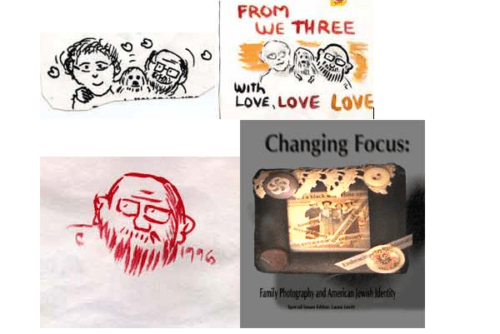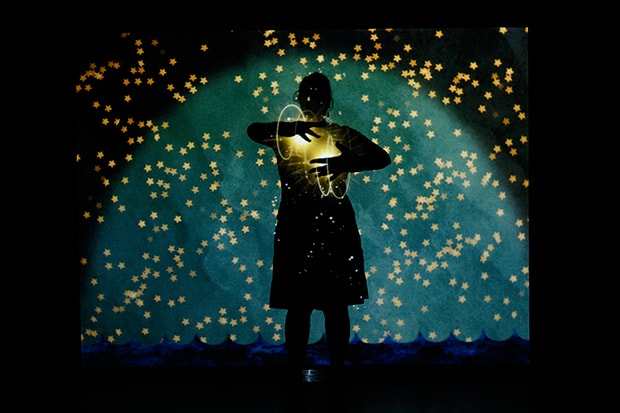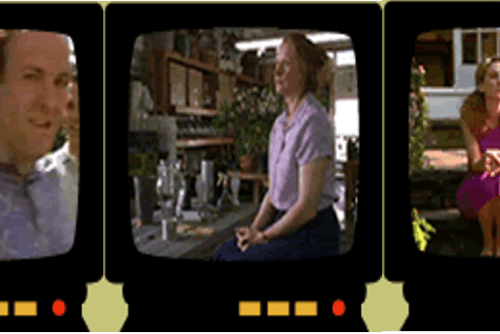The origins of this issue of The Scholar and Feminist Online reside in an international research project, “Interdisciplinary Innovations in the Study of Religion and Gender: Postcolonial, Post-secular, and Queer Perspectives,” an initiative established in 2009 by the chair of Religion, Gender and Modernity in the Faculty of Humanities of Utrecht University. This project, with significant financial support from the Netherlands Organisation for Scientific Research (NWO), built a network of institutions and individual scholars to establish an international research network on religion and gender. The institutions involved include: the Barnard Center for Research on Women and the Religion Department at Barnard College, Columbia University, New York, USA; the Centre for Gender and Religions Research, School of Oriental and African Studies (SOAS), University of London, UK; the Centre for Gender Research, University of Oslo, Norway; the Centre for Intercultural Communication and Interaction, Ghent University, Belgium; the Center for Transdisciplinary Gender Studies, Humboldt University, Berlin, Germany; the Christina Institute for Gender Studies, University of Helsinki, Finland; the Institute for Gender Studies, Radboud University Nijmegen, Netherlands; and the Religion and Society Programme, housed at the University of Lancaster, UK.
“Interdisciplinary Innovations in the Study of Religion and Gender” sought to surface developments in the academic study of religion and of gender, and to attend in more refined ways to the reconfiguration of religion in the contemporary world, one characterized by increasing globalization and reconfiguration of social ordering. The project brought together colleagues from a range of humanities and qualitative social science disciplines, with expertise in a wide range of religious traditions, national contexts, historical and literary archives, and fieldwork settings. The project’s steering committee planned several convenings in the early 2010s, which sought to bring the rich diversity of empirical examples into conversation by means of broad theoretical framings. BCRW hosted one of these convenings, “At the Intersection of Queer Studies and Religion,” in November 2013. The essays collected here include many of the presentations made at that convening as well as some additional contributions from participants and other scholars with expertise in the field.
A commonplace understanding of the intersections of queerness and religion most often paints the relationship between the two categories as a stark opposition. We are habituated to think of religion primarily in terms of its capacity for constraining and restricting many forms of sexual expression and sexual identity, and to frame the relationship between religion and non-normative sexuality as one of irreconcilable antagonism. And yet, although this framing captures a critical dimension of the intersection between religion and sexuality, it hardly exhausts it. Scholars exploring the textual and historical foundations of contemporary religious traditions frequently unearth and expose examples that can be read queerly. Further, as some of the contributors to this collection suggest, religious institutions, subject positions, modes of critical reflection and thought (theology) can and do from time to time open up spaces for queer relationship, identities, and critique. Moreover, insofar as “queer” is an analytical category that incorporates the sexual but is not wholly limited to it, both scholars and activists concerned with religion invite us to think in more complex and layered ways about the meeting place of queerness and religiosity—a space that is not only conflictual but also potentially generative, if queerly so.
The essays that make up this issue move through a series of theoretical and sometimes theological reflections while spanning historical periods, geographical locations, religious traditions, and particular examples and archives. As Laurel C. Schneider notes, the impact of queer theory on academic religious studies has been uneven. Historical and textual studies have generated strong and sometimes field-changing interventions into the received story and reception of canonical sources, while queer thinking about the category of “religion” itself and the particularities of religious practices, including theologizing, has been more diffuse and irregular in transforming the field. Claudia Schippert picks up this thread in her essay, asking us to consider the impact of another binary—that between “religion” and the “secular”—to think about how queerness affects institutions that interact closely with religious values and practices, from the family to the carceral state. Nikki Young, meanwhile, asks what both queerness and religion can offer to a revivified and reconfigured notion of freedom—“the process by which we live into our own and collective agencies”—arguing for a utopian, open-ended sense of possibility whereby both terms correct for the other’s limitations. Bee Scherer also offers a kind of utopian reflection, proposing a disruptive queer spirituality (more expansive than organized religion) as a critical ballast for—even a source of resistance against—neoliberal models of normativity.
Emilie Townes’ contribution grows out of her life’s work as a womanist theologian, exploring the category of “quare” (a term that functions in relationship to “queer” much as “womanist” functions in relationship to “feminist”) as both a mode of theorizing and a mode of embodied being. Like Townes, who wants to resist the confining nature of binarism, Amanullah De Sondy focuses our attention on the multiplicity of Islamic masculinities, complicating ideas about traditionalism, which is itself so often coded by gender. Jennifer Ung Loh’s work in India shows how certain systems of signification and denomination (e.g., legal language, international NGO policy, LGBT activisms, academic inquiry) for certain non-normative “queer subjects” can impose non-indigenous discursive and interpretive frames on the lived experiences of those individuals and communities, rendering them invisible or unrecognizable as religious actors, community members, and practitioners. Adriaan van Klinken attends to similar issues of theoretical and interpretive framing, asking whether queer theory (a “western” frame) is useful or colonial when used to interpret the circumstances of African individuals and communities and suggesting that attention to pre-colonial gender and sexual formations may correct for the colonizing potential of queer theory. Melissa Wilcox meanwhile uses race-critical and post-colonial critique to read the performances and self-crafting practices of the post-secular queer activist Sisters of Perpetual Indulgence, who understand themselves in the tradition of sacred clowns/holy fools.
Several contributions turn our attention to canonical and authoritative textual traditions, mining them for the queer turn. Marco Derks reads the Samson story in the Hebrew Bible through the prism of BDSM and “queer insights on power relations.” Sarra Lev and Max Strassfeld offer complementary reflections on the constraints and potentials of thinking queerly about rabbinic sources, Lev emphasizing the differences between queer religion and queer studies of religion, Strassfeld reflecting on the figure of queer bodies in relation to rabbinic tradition. Carol Anderson turns our attention to the Pali Buddhist textual tradition, exploring numerous places in her archive where gender-queerness signifies religious virtuosity. Kent Brintnall’s archive circles around the project of religious violence (e.g., sacrifice) and/as excess, drawing on Bataille (theorist of religion who himself straddles the boundary between canonical and heretical).
The remaining contributions organize themselves around particular case studies: Elizabeth Dolfi on Christian domestic discipline; Ju Hui Judy Han on queer activism in South Korea; Heather White on queer activisms in urban church contexts, seeking (in her terms) not to queer religion but to “religion” queer histories and subjectivities; Sarah Bracke, Nella van den Brandt, and Mariecke van den Berg all focusing on specific examples in Europe (Italy, Flanders, and the Netherlands), using their particular case studies to draw more general observations about the intersections of traditional and reforming religion(s), (post-)secularism(s), and gender and sexuality.
Together, these short essays contribute to a theoretical and empirical cartography for mapping the terrain at the intersections of queer studies and religion. Written at a particular moment—just before a series of significant political shifts toward the right around the globe, with more in the offing—this collection offers a snapshot of thinking, theorizing, and documentary preservation. None of these authors would make the naïve argument for a progress narrative when it comes to religion and queer life. Instead, their contributions offer glimpses of reading, thinking, living in modes that keep “religion” and “queer” in creative and critical suspense—or as contributor Nikki Young puts it, “Religion and queerness/queer studies challenge the notion that creating possibilities, identities, and responses to unjust social circumstances is outside the real of our individual and collective power and responsibility. Through religion and queerness, we ask questions of our selves and our theoretical and material surroundings.” In the current political moment, the very act of posing such questions becomes an act of critical resistance, and it is to that resistance that this collection is dedicated.




